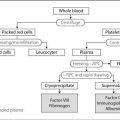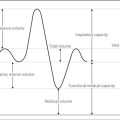Z
Zeolite. Hydrous silicate, used for ion or molecule trapping. An artificial zeolite is used in O2 concentrators, to retain nitrogen from compressed air. Has also been added to soda lime to retain water and prevent drying out.
Zero, absolute. The lowest possible temperature that can be attained: 0 kelvin (corresponds to −273.15°C).
Zero-order kinetics, see Pharmacokinetics
Ziconotide acetate. Synthetic form of a peptide derived from the venomous sea snail Conus magus, introduced in 2006 for the treatment of chronic pain. Acts as a neurone-specific N-type calcium channel blocking drug and thought to interrupt ascending pain pathways in the spinal cord.
Zidovudine (Azidothymidine; AZT). Nucleoside reverse transcriptase inhibitor; a thymidine derivative, it inhibits DNA synthesis via incorporation into DNA. The first anti-HIV drug used; other similar drugs are now available but zidovudine is still used for prevention and treatment of HIV infection and AIDS. Traditionally used in cases of needlestick injury to medical/nursing staff.
Zinc deficiency. May occur in patients with inadequate diets, malabsorption, catabolism and during TPN. Causes angular stomatitis, eczematous eruptions and impaired wound healing. Normal plasma zinc level (assuming normal serum albumin) is 12–20 µmol/l; daily requirement is 2.5–6.4 mg/day.
Zoledronic acid, see Bisphosphonates
Zone of risk, see Explosions and fires
Zopiclone. Non-benzodiazepine hypnotic agent used for the short-term (< 4 weeks) treatment of insomnia. Acts at GABAA receptors, potentiating the action of endogenous GABA. Rapidly absorbed, with minimal ‘hangover’. Undergoes hepatic metabolism with minimal renal excretion of the unchanged drug; dosage should therefore be reduced in hepatic failure.





